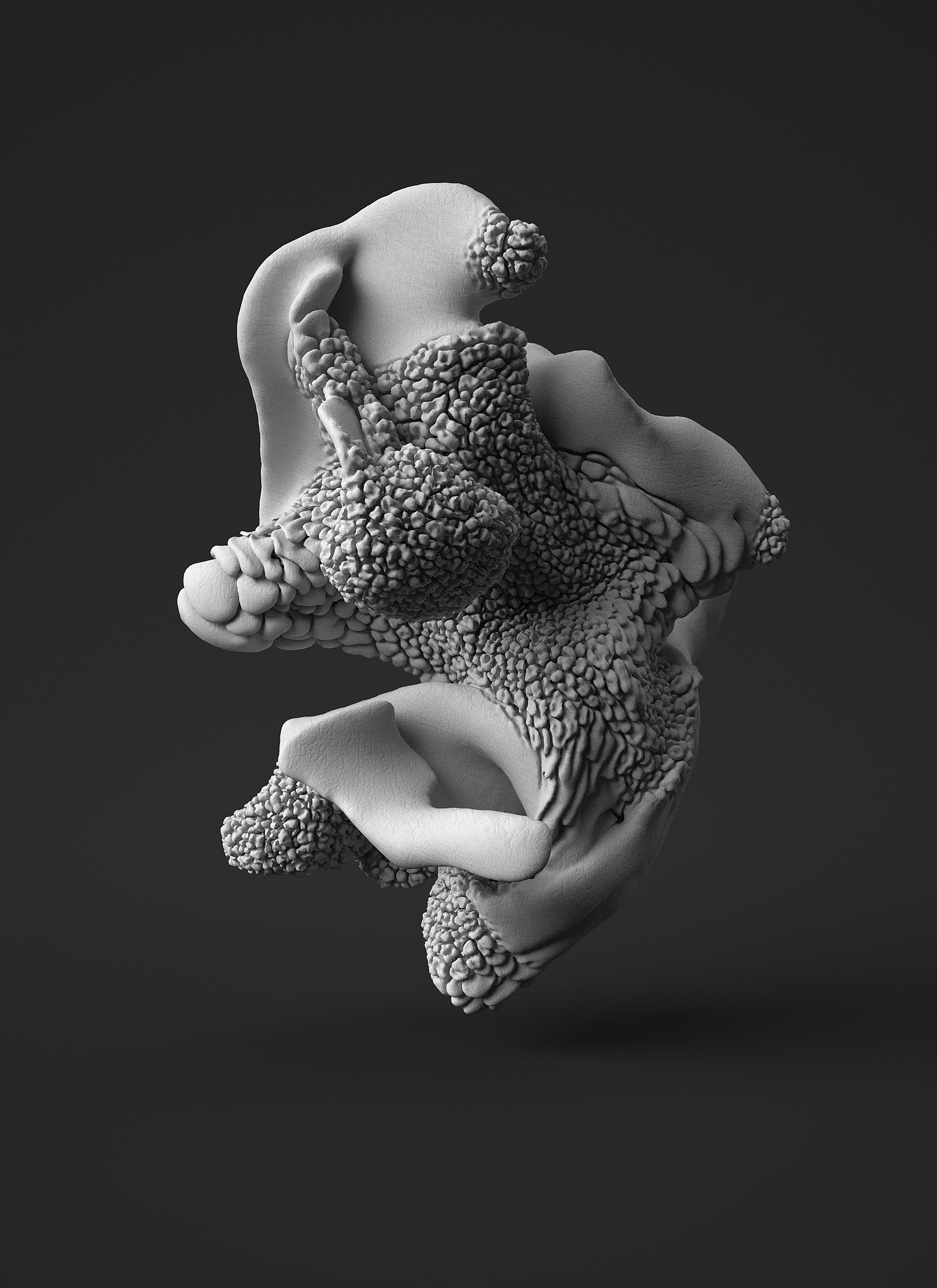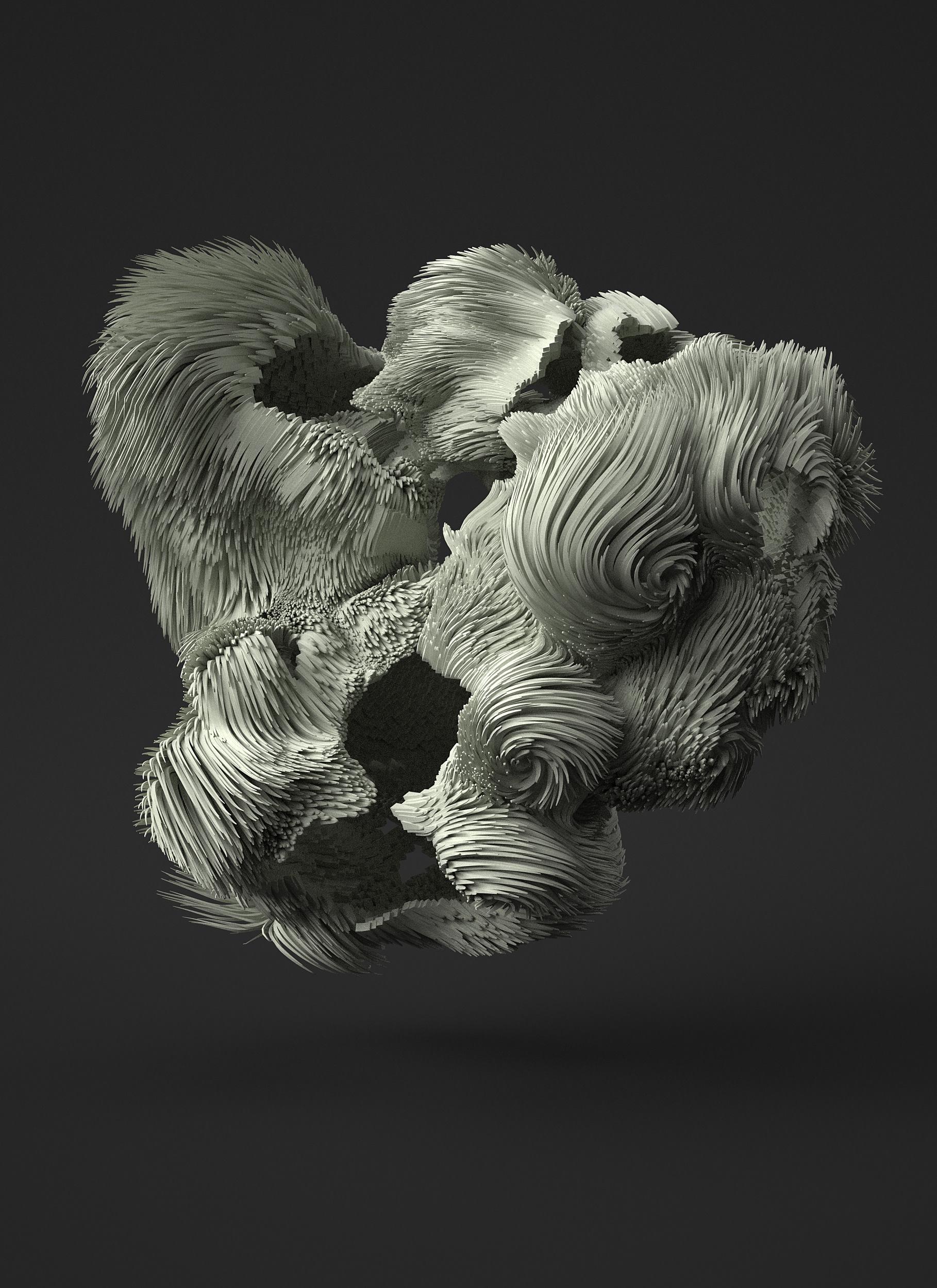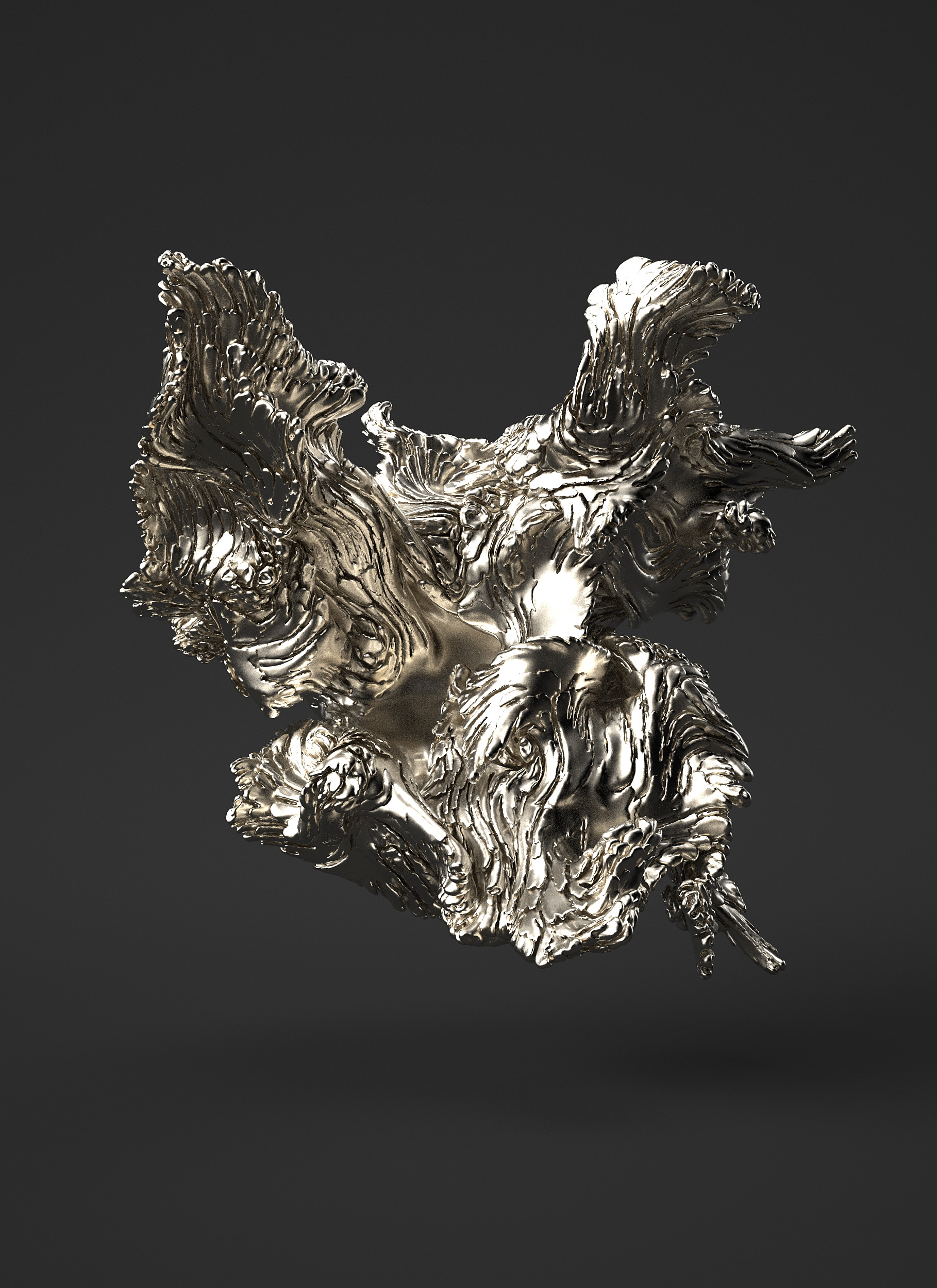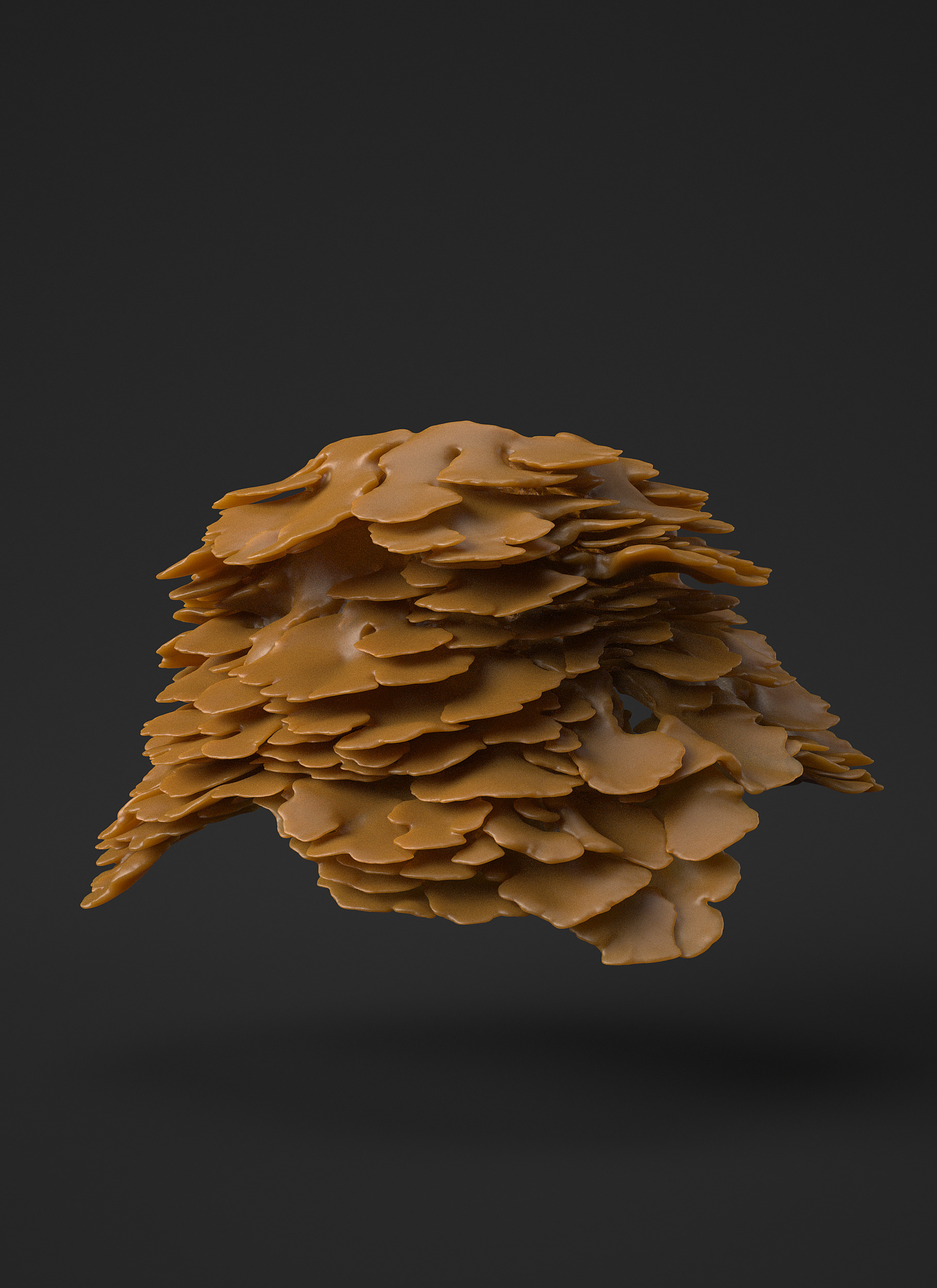Wanderers
Wanderers / 2014 /
Christoph Bader, Dominik Kolb, William Patrick, Steven Keating, Sunanda Sharma, Prof. Neri Oxman
.
Description
Wanderers is a series of computationally grown and additively manufactured wearables that speculates about new ways of creating and producing clothing. We designed a computional growth process which is capable of producing a wide variety of growing structures. Inspired by natural growth behaviour, the computional process creates shapes that adapt to their environment. Starting with a seed, the process simulates growth by continously expanding and refining its shape. Due to the generative nature of the algorithm it was possible to create a wide range of wearables that adapt to the human body for pre-visualization and design iteration. From this process four wearables were grown. All off the grown wearables in this collection designed by Prof. Neri Oxman aim to embed living matter within 3D structures.
Process
We explore a computational approach and associated protocol, which emulates biological growth by developing complex geometries over multiple iterations. The general framework for the generation of grown structures utilizes a hybrid approach to the simulation of evolving interfaces. A geometric input representation—phenotype (e.g. a triangle mesh, a set of line segments, or a point cloud) is transformed into an intermediate representation—genotype. Data gathered from these three representations is then used to deform the initial geometric representation. Lastly, the deformed initial representation is topologically changed to react to the deformation of the object. This is done iteratively, such that results given for input representations are continuously deformed and refined. As the process repeats, the deformations aggregate into the growth of a coherent form. By altering the geometric genotype and phenotype, a broad variety of different structures can be ‘grown’.
























Wearables
The setting for this exploration is the solar system where, with the exception of planet Earth, no life can exist. The series represents the classical elements understood by the ancients to sustain life (earth, water, air and fire), and offers their biological counterpart in the form of microorganisms engineered to produce life-sustaining elements. The wearables are designed to interact with a specific environment characteristic of their destination and generate sufficient quantities of biomass, water, air and light necessary for sustaining life: some photosynthesize converting daylight into energy, others bio-mineralize to strengthen and augment human bone, and some fluoresce to light the way in pitch darkness. Each wearable is designed for a specific extreme environment where it transforms elements that are found in the atmosphere to one of the classical elements supporting life: oxygen for breathing, photons for seeing, biomass for eating, biofuels for moving, and calcium for building. Design research at the core of this collection lies at the intersection of multi-material 3D printing and Synthetic Biology.
Mushtari
Quamar
Zuhal
Otaared
The medieval Arabs are known for their fascination with astronomy. They took a keen interest in the study of celestial bodies; motivated to better comprehend the divine creation, they also appreciated the knowledge of the constellations as guidance in their journeys. In honor of these early contributions to the science of astronomy the Wonderers in this collection are named in Arabic after their respective destination planets: Mushtari (a wearable for Jupiter), Zuhal (a wearable for Saturn), Otaared (a wearable for Mercury); and Qumar (a wearable for the Moon). The word "planet" comes from the Greek term planets meaning "wanderer".
Acknowlegements
The Wanderers were unveiled as part of the exhibition: ‘The Sixth Element: Exploring the Natural Beauty of 3D Printing'.
The wearables were 3D printed with Stratasys multi-material 3D printing technology.
.